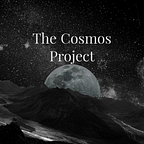KNOW THE HUBBLE
Do you know about the world’s first space-based optical telescope?
Its Hubble Space telescope named after American astronomer Edwin P. Hubble and It just turned 31 years old last month.
The Hubble’s orbit above the Earth’s distorting atmosphere allows astronomers to make the soaring resolution observations that are essential to open new windows onto planets, stars and galaxies. Hubble’s launch and deployment in April 1990 marked the most significant advance in astronomy since Galileo’s telescope. Hubble has made more than 1.3 million observations since its mission began in 1990.
Hubble has changed our vision towards astronomy. This space telescope orbits 340 miles(547.177 km) above Earth’s surface and has been observing astronomical phenomena since 1990. It observes objects as nearby and small as colliding asteroids to distant star-forming galaxies that date back to when the universe was only three percent of its current age. Hubble has made remarking discoveries about the Giant space and changed our understanding of the cosmos forever. These observations include the dark energy as well which explains about the existence of ever expanding universe. These observations range from the tracing the galaxies to the Dark holes.
Much famous of these observations include:
☆Eagle Nebula: Cold gas illuminated by light from a cluster of young stars with strong stellar winds in the form of three gigantic columns which are approximately four light years tall, at the top of which exist large gaseous globules within which stars are being born.
☆Giving us insights about dark energy and dark matter and helping us understand the expanding behavior of the universe. It has shown that the universe is not just expanding but also accelerating! It was a discovery that has won a Nobel prize in physics. This acceleration is believed to be caused by the dark energy.
☆Tracing the growth of galaxies: The universe was smaller in the past and the galaxies have been expanding throughout the cosmic time. Hubble can look back into the time as it peers deeper into space. Galaxies interact with each other gravitationally. Hubble has been observing our neighboring galaxy M31(Andromeda galaxy) and has predicted that milky way galaxy will collide and merge with M31 4 billion years from now, since M31 has been moving towards MWG because of the gravity.
☆Recognizing world beyond the sun, realizing that monster black holes are everywhere, studying the outer planets and the moons, uncovering icy objects in the Kuiper belt i.e. moons around Pluto.
☆Tracking evolution in the asteroid belt.
☆Finding planetary construction zones.
☆Exploring the birth of stars.
☆Documenting the death throes of the stars.
☆Seeing light echoes.
☆and viewing galactic mergers and details : how galaxies reshape each other over ages.
You can make your additions below. Post your thoughts.
